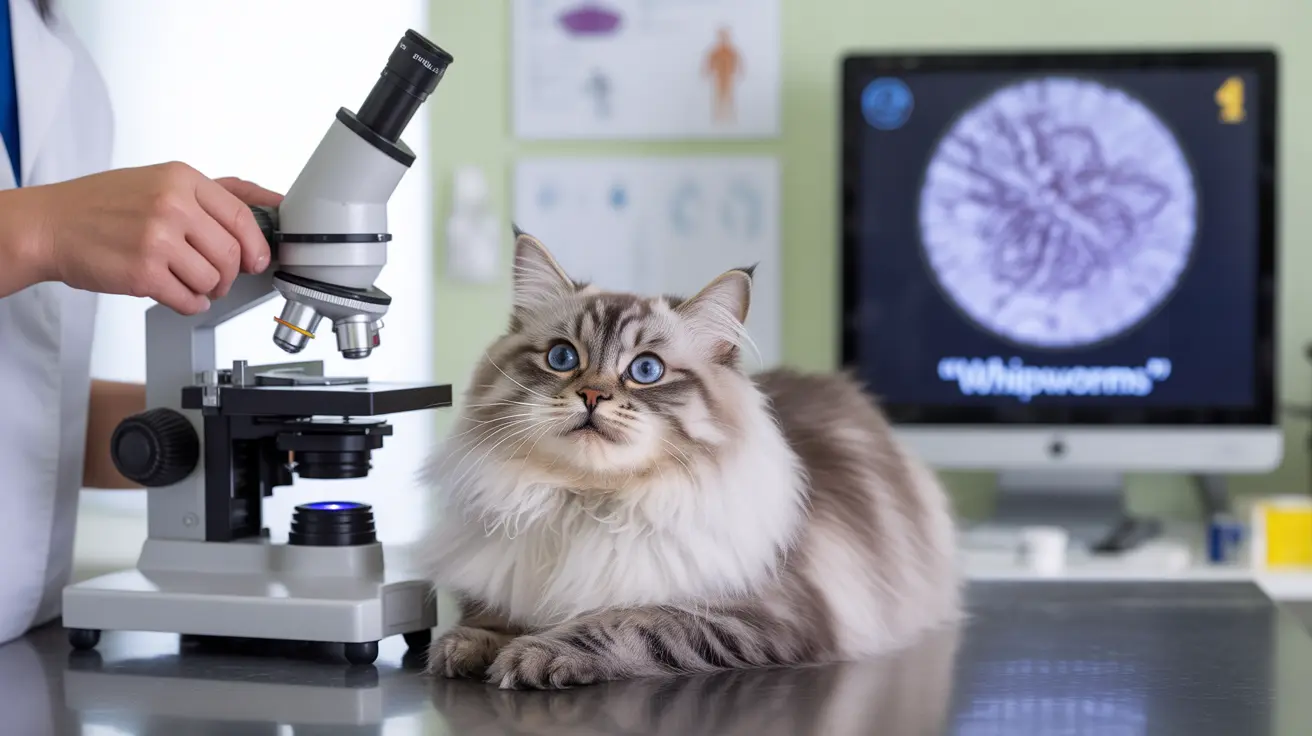Understanding whipworms in cats is crucial for every pet owner, as these parasitic infections can cause serious health issues if left untreated. While less common than in dogs, whipworm infections require prompt attention and proper management to ensure your feline friend's wellbeing.
In this comprehensive guide, we'll explore everything you need to know about whipworms in cats, from their appearance and symptoms to effective treatment options and prevention strategies. We'll also provide visual identification tips to help you better understand what to look for.
Understanding Whipworms and Their Visual Identification
Whipworms (Trichuris species) are distinctive parasites that get their name from their characteristic whip-like shape. The anterior end is thin and threadlike, while the posterior end is thicker, resembling a whip handle. Adult worms typically measure up to 5 centimeters in length, though they're rarely visible to the naked eye in cat feces.
Under microscopic examination, whipworm eggs appear football-shaped with distinctive polar plugs at each end. They're typically yellowish-brown in color and require professional laboratory analysis for proper identification.
Common Symptoms and Warning Signs
Cats infected with whipworms may display various symptoms, ranging from mild to severe. Common indicators include:
- Chronic diarrhea, sometimes containing blood or mucus
- Unexplained weight loss
- Dehydration
- Lethargy and weakness
- Poor coat condition
- Anemia in severe cases
Some cats may show no obvious symptoms, especially in early stages or with light infections, making regular veterinary check-ups essential.
Diagnosis and Treatment Options
Diagnosing whipworms can be challenging due to their irregular egg-shedding patterns. Veterinarians typically rely on:
- Multiple fecal flotation tests
- Centrifugation techniques
- Specialized antigen testing
- PCR testing in some cases
Treatment usually involves deworming medications such as fenbendazole or other prescribed antiparasitic drugs. Multiple treatments are often necessary, spaced several weeks apart, to ensure complete elimination of the parasites.
Prevention and Environmental Control
Preventing whipworm infections requires a multi-faceted approach:
- Regular cleaning and disinfection of litter boxes
- Prompt removal of feces from indoor and outdoor areas
- Maintaining a clean, dry environment
- Regular veterinary check-ups and preventive treatments
- Limiting outdoor access to contaminated areas
Frequently Asked Questions
What do whipworms in cats look like, and how can I identify them?
Whipworms are microscopic parasites with a characteristic whip-like shape. While adult worms are rarely visible in feces, their eggs can be identified through microscopic examination by a veterinarian. The eggs are football-shaped with polar plugs at each end.
How do cats get whipworms, and what are the common sources of infection?
Cats typically contract whipworms by ingesting infected eggs from contaminated soil, water, or environments. The eggs can survive in the environment for years and may be brought indoors on shoes or clothing.
What are the symptoms of a whipworm infection in cats, and how can I recognize them?
Common symptoms include chronic diarrhea (sometimes bloody), weight loss, dehydration, and poor coat condition. Some cats may show no obvious signs, making regular veterinary screening important.
How do I treat whipworms in cats effectively, and what medications are recommended?
Treatment typically involves prescribed deworming medications such as fenbendazole, administered in multiple doses over several weeks. Your veterinarian will determine the most appropriate treatment protocol based on your cat's specific situation.
What are the best methods for preventing whipworm infections in cats and maintaining a clean environment?
Prevention includes regular litter box cleaning, proper disposal of feces, maintaining a clean environment, and following your veterinarian's recommended preventive treatment schedule. Limiting outdoor access can also reduce infection risk.
Conclusion
While whipworms in cats are less common than in dogs, they remain a serious health concern that requires vigilant monitoring and proper management. By understanding the signs, maintaining good hygiene practices, and working closely with your veterinarian, you can help protect your feline companion from these persistent parasites.






